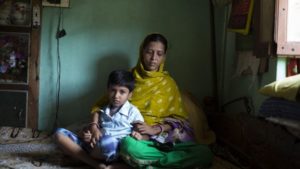Five Lives: A chronicle of Indian womens struggle against TB
The book- Five Lives: Women with Tuberculosis in India by Chapal Mehra begins and ends with a simple reiteration- this could be anyone’s story- and it needs to be told more than hushed about- and in all honesty, that truly is the need of the hour.

A
ccording to the World Health Organization, the country records 2.8 million new tuberculosis cases annually of which more than 100,000 are multidrug resistant (MDR). The disease kills 485,000 Indians every year, and costs the government around $24bn. The WHO also estimates that roughly 40 per cent of India’s population has latent tuberculosis – where they are infected with the M.tuberculosis bacterium, but do not have active TB disease. People with latent TB are not infectious, but could develop active TB in the future.
The impact of TB is widespread. Treatment takes a financial toll on families, there are delays in diagnosis of the illness, drug resistant tuberculosis is often misdiagnosed and patients are stigmatized and shunned by society.
Tuberculosis is the main irresistible reason for death in ladies around the world. The infection represents a noteworthy risk to womens’ wellbeing and security. Populace development, the HIV scourge, expanding poverty and rising levels of medication obstruction will definitely build the weight of this malady in women. Women are at expanded danger of movement to sickness amid their conceptive years. Be that as it may, in most low-pay nations, twice the same numbers of men are diagnosed with tuberculosis as women. Organic systems may represent the greater part of this distinction however financial and social variables prompting hindrances in getting to health services may cause under-reporting in women. Tuberculosis control projects ought to be delicate to the imperatives required by women in getting to medicinal services, keeping in mind the end goal is to get women to engage with, to initiate and finish treatment.
The dread and disgrace related with tuberculosis greatly affects women, and most often, more than men, regularly abandoning them in a more tricky social and financial position. Tuberculosis in ladies makes vagrants, devastated families and lessens the financial improvement of society. Tuberculosis is a noteworthy reason for preventable enduring and passing in ladies. WHO’s prescribed tuberculosis control methodology, DOTS, speaks to a financially viable solution to the issue of tuberculosis in females. Tuberculosis is a large medical problem in women. It is a worldwide health care need that tuberculosis treatment is made accessible to ladies, especially to those in low-wage nations who are enduring the worst part of this pestilence.
“Chapal Mehra’s collection, Five Lives- Women and Tuberculosis in India, follows the journey of five different women battling TB, from different socio-economic backgrounds and locations. Their stories are moving, deeply personal accounts and recollections, each more intriguing than the previous. These stories highlight how gendered the playing out of this highly common disease.”

Mehra’s collection isn’t a mere anthology of lived experiences; it comes with a collection of wonderful suggestions stemming from these very realities. Tuberculosis takes a bigger number of ladies lives every year than any other disease. Around 33 per cent of the total populace is contaminated with TB, and the largest weight of illness happens in those who are 15-49 years of age. TB is the third reason for dreariness and mortality consolidated in females of conceptive age in developing nations and prompts a greater number of passing in ladies than maternal mortality. Commonness of TB is comparative in males and females until immaturity, when it increments in males. In high population nations, in any case, ladies of regenerative age have higher rates of movement to sickness than men in this age gathering.
Sexual orientation differentials exist in revealing and diagnosing TB, and aloof case finding likely prompts inability to analyse TB in females. The financial outcomes of TB in ladies are exacerbated by later reporting, which prompts a poor diagnosis. An investigation in India found that male patients with TB anticipated that their spouses would look after them, yet infected wives were largely uncared for, and very often shunned from society and kept away from their own children. In this way, married women may endeavor to conceal their symptoms as opposed to looking for help. TB in ladies adversely affects infant survival and family welfare.
“Financial factors additionally affect TB control endeavors, particularly for ladies who experience the ill effects of unbalanced destitution, low societal position, less training (which blocks looking for medical opinion), and boundaries to medicinal services. Females often find that it’s harder to conform to treatment once symptoms die down. In this manner, TB control projects ought to be sensitive to sexual orientation.”

The HIV pestilence is additionally expanding the weight of TB for ladies, who appear to have a higher danger of creating TB amid their regenerative years than men. TB is an ignored medical issue that can be controlled through financially viable mediations. An absence of political will and lack of subsidies remain the biggest hindrances to diminishing the weight of TB in ladies.
The book suggests steps such as working towards stigma reduction relating to TB, counseling services for affected women as well as their families, gender focused and specific health education and initiatives, counting the exact number of incident cases of TB in the populace and segregating them by gender and within gender, by age, demographic etc, so as to enable better policy making, and more precise care. India has been engaged in TB control activities for more than 50 years, yet TB continues to be India’s one of the severe health crisis. It kills an estimated 480,000 Indians every year and more than 1,400 every day. India also has more than a million ‘missing’ cases every year that are not notified and most remain either undiagnosed or unaccounted for, inadequately diagnosed and/or treated in the private sector. This tragic loss of life, continued suffering and poverty need to end with concerted efforts from all of us.
Five Lives: Women with Tuberculosis in India; Author: Chapel Mehra; Published by: Survivors Against Tb & Pi Consulting; Year-2016; Pages: 52.
